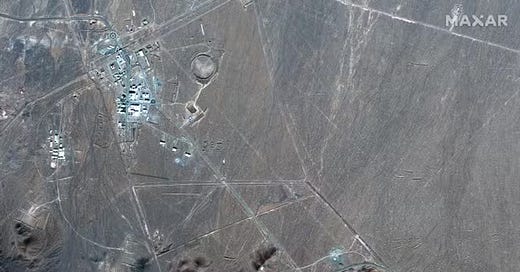Trump’s strikes on Iran’s nuclear facilities were anything but unexpected. The deployment of B-2 bombers, combined with his repeated warnings, signaled clear intent in the days leading up to the operation. What remains uncertain is how Iran will interpret the scale and severity of the attack—and whether it will feel compelled to respond directly against U.S. positions or regional allies. The scope of physical damage, especially to underground enrichment sites, will likely serve as the main trigger for Tehran’s calculus.
For now, it appears Trump chose a limited strike package: one designed to cripple elements of Iran’s nuclear infrastructure while avoiding a broader war. From what has been reported, no U.S. ground troops were deployed, a decision that sends a calibrated message—Washington is willing to use force to roll back Iran’s nuclear capabilities, but it has little appetite for a protracted ground conflict. This approach preserves some space for diplomacy, but only if both sides show restraint in the coming days.
Iran’s response options remain potent. The regime maintains a missile arsenal capable of striking targets across the Gulf, including in Saudi Arabia, the UAE, and Bahrain—home to key U.S. military installations. A direct retaliation would risk igniting a broader regional war, especially if Iran moves to mobilize its proxies in Iraq, Syria, Lebanon, or Yemen. In the hours before the strike, Iran-linked militias in Yemen and Iraq issued new threats to attack U.S. forces in the region, including in Syria and Iraq. This could also mean more attacks in the Red Sea, risking further issues for maritime access.
A critical flashpoint remains the Strait of Hormuz. Any attempt by Iran to disrupt maritime traffic or close the strait would immediately globalize the crisis, sending oil prices soaring and drawing in additional military responses from the U.S. and its partners. The region has seen this kind of brinkmanship before, but never with nuclear facilities under active bombardment. The risk of miscalculation is high.
What happens next hinges on whether both sides can manage the escalation ladder. For the moment, Trump has delivered a forceful military message without plunging the U.S. into another full-scale Middle East war. This could change. But that balance is fragile. Iran’s next move will determine whether this confrontation remains contained—or tips the region into yet another cycle of open conflict.





China buys huge amounts Iranian oil. It doesn't want huge increases in oil prices. Or affect its supply. China won't look kindly on Iran shutting Hormuz.